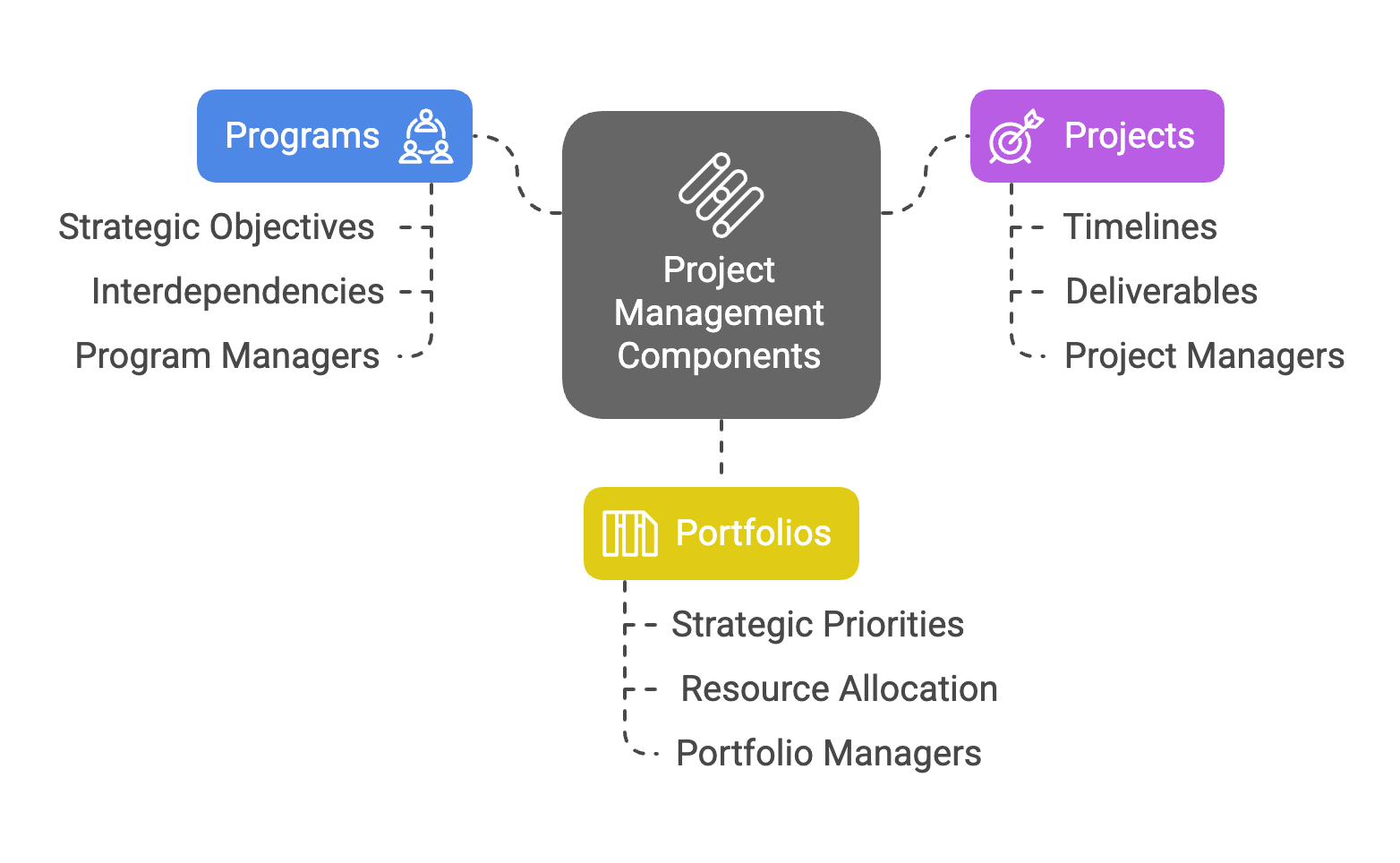Do you know the differences between programs, projects, and portfolios? Unfortunately, these terms are often used interchangeably, leading to confusion and misinterpretation. This article aims to provide a thorough exploration of the formal definitions and distinctions of these concepts, shedding light on their unique characteristics and the implications they have for successful project delivery.

Programs: Orchestrating Complex Initiatives
Programs are defined as groups of related projects and activities that are coordinated and managed synergistically to achieve strategic objectives. They tackle complex initiatives that necessitate a coordinated approach for effective implementation. With their larger scope, broader objectives, and interdependencies among projects within the program, programs require skilled program managers who oversee the entire initiative. Their responsibilities include ensuring alignment with organizational objectives, managing stakeholder expectations, and facilitating coordination among project managers and teams.
Projects: Focused Efforts with Defined Objectives
Projects, in contrast, are distinct endeavors with well-defined objectives, timelines, and deliverables. They are temporary in nature, initiated to create a unique product, service, or result. Led by project managers, projects have a defined start and end date, specific scopes, and designated resources. Project managers are responsible for driving project execution, managing resources, mitigating risks, and delivering the desired outcomes while adhering to constraints of time, cost, quality, and scope. Projects serve as the building blocks of programs and portfolios, operating either within program frameworks or as standalone endeavors based on their scope and strategic significance.
Portfolios: Strategic Alignment and Investment Management
Portfolios encompass a collection of projects, programs, and other initiatives managed as a cohesive unit to achieve strategic objectives. Guided by an organization's strategic priorities, portfolios involve the selection, prioritization, and management of various initiatives to maximize value and align with organizational goals. The portfolio manager plays a crucial role in ensuring strategic alignment, managing investment decisions, and optimizing resource allocation across projects and programs. By assessing performance, potential, and alignment with organizational objectives, portfolio managers make informed decisions regarding resource allocation, prioritization, and termination of initiatives.
Key Differences among Programs, Projects, and Portfolios
Scope and Objectives: Programs encompass multiple related projects, while projects have specific scopes. Portfolios include a collection of projects, programs, and other initiatives contributing to strategic objectives.
Governance and Management: Programs have program managers overseeing coordinated project management, projects have project managers focusing on individual endeavors, and portfolios are governed by portfolio managers making strategic decisions.
Interdependencies: Programs have interdependencies among projects within the program, while projects are standalone endeavors. Portfolios' degree of interdependency varies based on strategic alignment and resource allocation.
Duration and Lifecycle: Programs are long-term with multiple projects, projects have defined lifecycles, and portfolios are ongoing, evolving as initiatives are added or completed.
Conclusion
Understanding the distinctions between programs, projects, and portfolios is crucial for effective project planning, execution, and strategic alignment. Programs orchestrate complex initiatives, projects focus on defined objectives, and portfolios provide a holistic view of an organization's initiatives. By grasping these differences and employing appropriate methodologies, project managers and organizations can enhance project delivery capabilities, maximize value, and achieve strategic objectives. Clear communication and alignment across programs, projects, and portfolios are essential in today's dynamic and competitive business landscape. As project management professionals, it is our responsibility to navigate the complexities of managing initiatives, delivering successful projects, and optimizing resource allocation within portfolios.